 Technology peripherals
Technology peripherals
 AI
AI
 Will 'time travel' come true? Scientists create the first 'wormhole' and appear on the cover of Nature
Will 'time travel' come true? Scientists create the first 'wormhole' and appear on the cover of Nature
Will 'time travel' come true? Scientists create the first 'wormhole' and appear on the cover of Nature
As people living in a three-dimensional world, we all seem to have thought about a question: Is time travel possible?
In 1916, Austrian physicist Ludwig Flamm first proposed the concept of "wormhole". In the 1930s, Einstein and Nathan Rosen were studying the gravitational field. The equation assumes that the black hole and the white hole are connected through a wormhole, so the "wormhole" is also called the "Einstein-Rosen Bridge." "Wormholes" are considered to be possible "shortcuts" in the universe, through which objects can transfer time and space in an instant. However, scientists have been unable to confirm the objective existence of wormholes.
Now, scientists have created the first-ever wormhole, and the research paper is on the cover of Nature magazine.
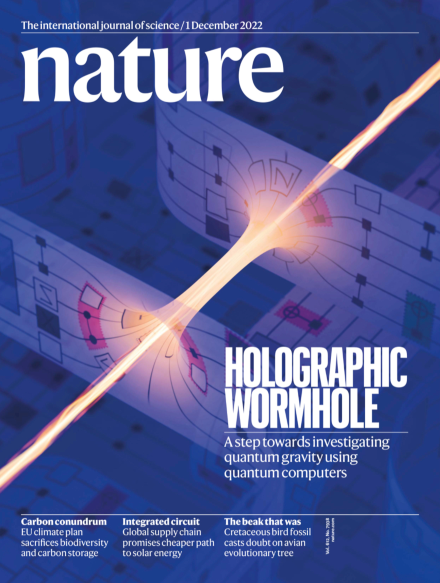
##Paper address: https://www.nature.com/articles/s41586-022-05424-3
A wormhole is like a hologram, made up of quantum bits of information, or "qubits," stored in tiny superconducting circuits. The research successfully sent information through a wormhole by manipulating qubits.
This research was led by California Institute of Technology physics professor Maria Spiropulu. The research team used Google’s quantum computer Sycamore to implement a new “wormhole teleportation protocol.” .
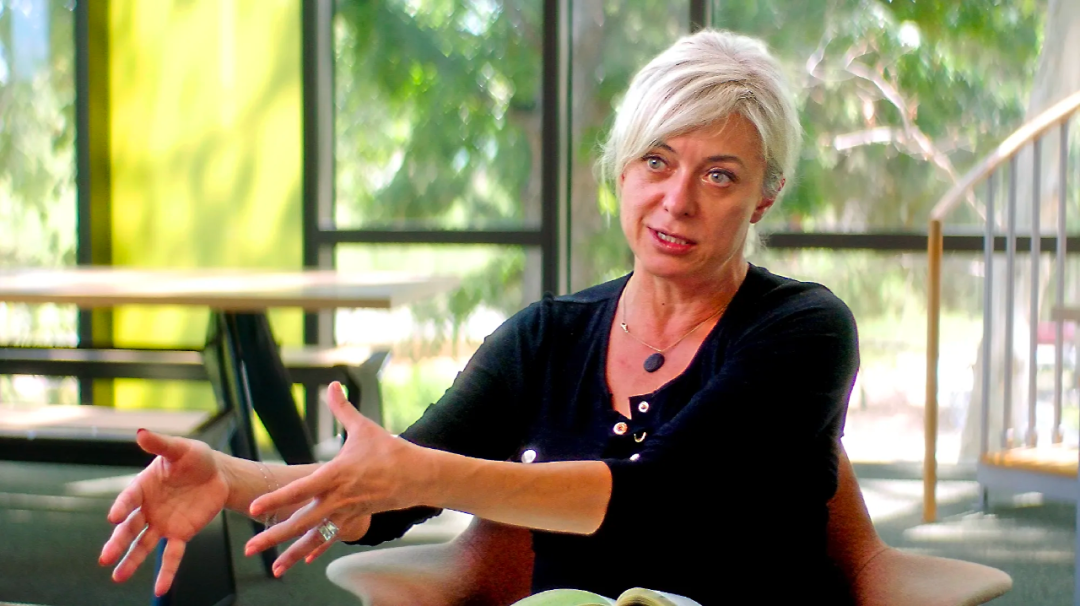 Caltech physicist Maria Spiropulu. Source: Quantum Magazine.
Caltech physicist Maria Spiropulu. Source: Quantum Magazine.
The holographic principle is a basic principle based on the quantum properties of black holes, involving basic physics, quantum mechanics and general relativity. Physicists have been trying to reconcile these disparate theories since the 1930s. Since the 1990s the holographic principle has proposed mathematical equivalence or "duality" between the two frameworks. The holographic principle holds that the curved space-time continuum described by general relativity is actually a quantum system of particles in disguise. Spacetime and gravity arise from quantum effects, just as 3D holograms are projected from 2D patterns.
The new experiment conducted by Spiropulu and others confirms that we can control quantum effects in quantum computers and produce the phenomenon we expect to see in the theory of relativity - wormholes.
To be clear, unlike ordinary holograms, wormholes are not something we can see. Daniel Jafferis, the lead developer of wormholes and a co-author at Harvard University, believes that although our research results can be considered a "real space-time filament" transmission protocol, it is not part of the same real world that we and the Sycamore computer inhabit. The holographic principle suggests that these two realities—the one with wormholes and the one with qubits—are different versions of the same physics, but how to conceptualize this duality remains a mystery.
The scientific community may have various opinions on the basic meaning of the research results. But crucially, the holographic wormhole in the experiment is composed of a different space-time than the space-time of our own universe. Whether this experiment is further proof that the space-time we inhabit is also holographic is debatable.
Jafferis said: "I think the gravity in the universe does arise from some qubits, just like this one-dimensional wormhole arises from the Sycamore chip. But we We’re not entirely sure yet, and we’re still trying to figure it out."
BackgroundThe AdS/CFT correspondence was discovered at the end of a series of inquiries prompted by the question . What is the maximum amount of information that can be accommodated in a single area of space? If someone asked an engineer how much information a data center might store, the answer would likely be "it depends on the number and type of memory chips in it." But surprisingly, what's inside the data center ultimately isn't that important. If we cram more and more memory chips and denser and denser electronics into a data center, it will eventually collapse into a black hole that disappears behind the event horizon.
When physicists such as Jacob Bekenstein and Stephen Hawking tried to calculate the information content of a black hole, they were surprised to find that it was given by the area of the event horizon, not by the black hole volume of. It looks like the information inside the black hole is written on the event horizon. Specifically, the event horizon of a black hole can be laid out with the area of A tiny units (each unit is called the "Planck area", which is 2.6121×10^-70 square meters), with up to A/4 bits information. This limit is called the "Bekenstein-Hawking boundary."
This discovery shows that the maximum amount of information a region can hold is not necessarily proportional to its volume, but to the surface area of the region's boundaries, which hints at quantum information An interesting relationship with the three-dimensional world of our daily experience. This relationship has been encapsulated by the phrase "It from qubit," describing how matter (it) emerges from quantum information (qubits).
While formalizing this relationship is difficult for ordinary spacetime, a recent study has made significant progress toward a hypothetical universe with hyperbolic geometry, known as "Anti-de Sitter space" (anti-de Sitter space), in which the construction of quantum gravity theory is more natural.
In anti-de Sitter space, the description of the volume of space upon which gravity acts, can be thought of as being encoded on the boundaries surrounding that volume: every object in the space There are corresponding descriptions on the borders and vice versa. This correspondence of information is called the "holographic principle," a general principle inspired by the observations of Bekenstein and Hawking.
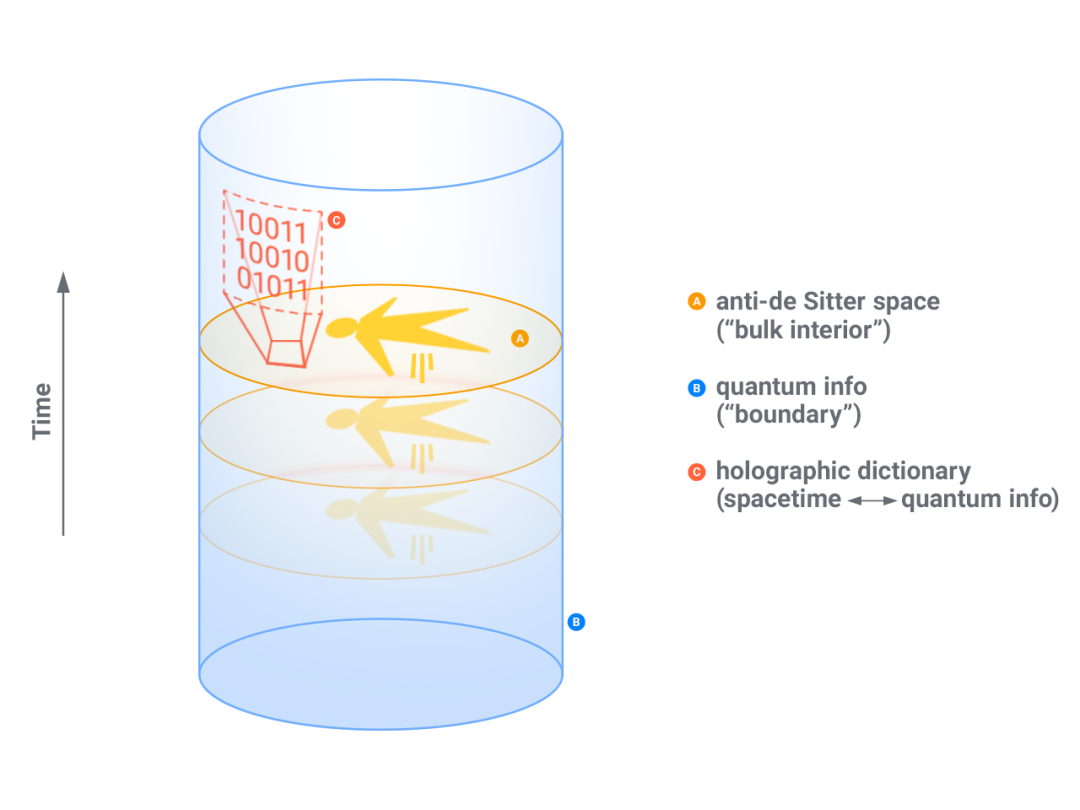
The AdS/CFT correspondence allows physicists to connect objects in space to specific collections of interacting qubits on the surface . That is, each region of the boundary encodes (in quantum information) the contents of a certain region of space-time, such that matter at any given location can be "constructed" from quantum information. This allows quantum processors to work directly with qubits while providing insights into the physics of space and time. By carefully defining the parameters of a quantum computer to simulate a given model, we can study black holes, or even go one step further, to study two interconnected black holes—a configuration known as a “wormhole,” or “Einstein - Rosen Bridge".
Quantum Gravity in the Lab
Google researchers plan to implement these ideas on the Sycamore processor, and they have built the equivalent of a traversable wormhole. Quantum system. Using holographic principles to translate the language of quantum information into the physics of space and time, the experiment lets a particle fall into one side of a wormhole and watch it emerge on the other side.
In recent research, Daniel Jafferis, Ping Gao and Aron Wall demonstrated the possibility of traversable wormholes. Wormholes have long been the subject of science fiction, but one constructed "from the imagination" would collapse on particles that pass through it.
Researchers have shown that a negative energy shock wave, a deformation of space-time that travels at the speed of light, can solve this problem by opening up the wormhole long enough for it to travel through it. The presence of negative energy in traversable wormholes is similar to the negative energy in the Casimir effect, where vacuum energy pushes closely spaced plates together. In both cases, quantum mechanics allows the energy density at a particular location in space to be positive or negative. On the other hand, if the wormhole experiences a shock wave of positive energy, no information will be allowed through.
The simplest application of using holographic principles to create a wormhole requires many, many qubits - in fact, to come close to the pencil and paper solution given by theoretical physicists The solution requires a lot of qubits. As the number of qubits decreased, additional corrections were required that are still unknown today. To build a traversable wormhole on a limited number of quantum computers requires new ideas.
One of the researchers, Zlokapa, used deep learning ideas to design a small quantum system that retains key aspects of gravitational physics. Neural networks are trained by backpropagation, a method that optimizes parameters by directly calculating the gradients of each layer of the network. In order to improve the performance of neural networks and prevent them from overfitting the training data set, machine learning researchers use a large number of techniques, such as sparsification, which attempts to limit the information details in the network by setting as many weights as possible to zero.
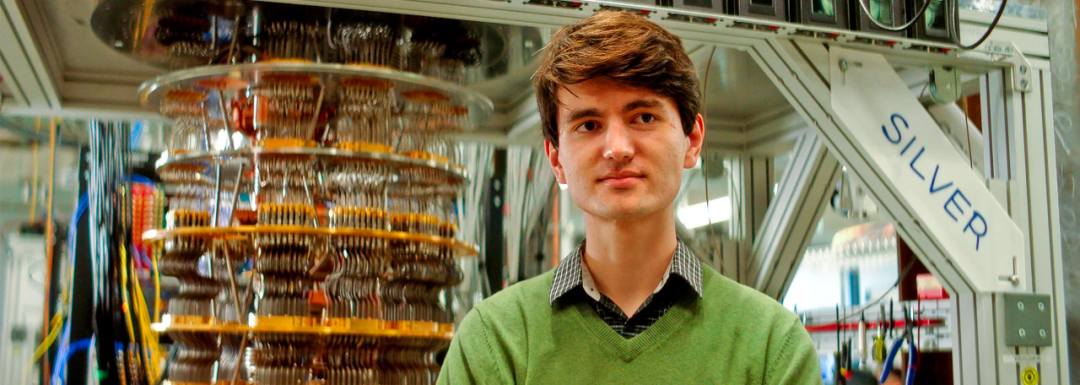 Alex Zlokapa is a graduate student at MIT who joined the Wormhole Project as an undergraduate. In his research, he found a way to simplify the wormhole protocol enough to run on Google's quantum computer. Source: Quantum Magazine.
Alex Zlokapa is a graduate student at MIT who joined the Wormhole Project as an undergraduate. In his research, he found a way to simplify the wormhole protocol enough to run on Google's quantum computer. Source: Quantum Magazine.
#Similarly, to create a wormhole, researchers start with a large quantum system and treat it like a neural network. Backpropagation updates the parameters of the system to maintain gravitational properties, while sparsification reduces the size of the system. They applied machine learning to learn a system that retained only one key gravitational feature: the importance of using negative energy shock waves. The training data set compares the dynamics of particles traveling through a wormhole propped open with negative energy and a wormhole collapsed with positive energy. By ensuring that the learned system retained this asymmetry, they obtained a sparse model consistent with wormhole dynamics.
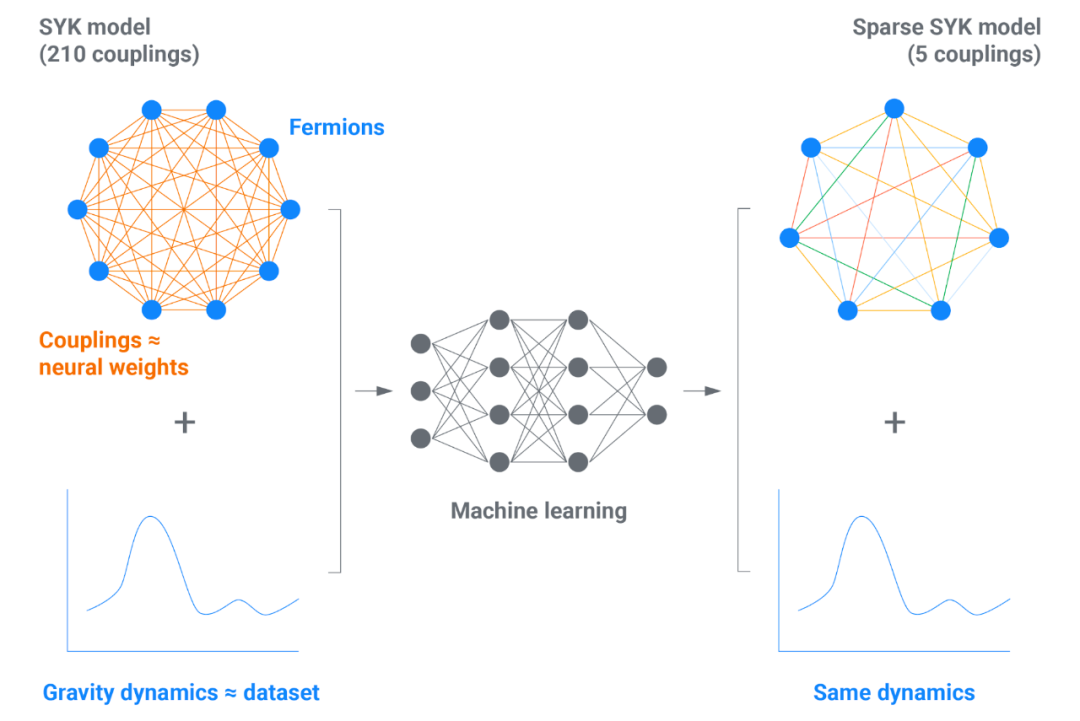
The researchers conducted many tests on the new quantum system to determine whether it exhibited gravitational behavior beyond the characteristics caused by shock waves of different energies. . For example, while quantum mechanical effects can convey information in quantum systems in a variety of ways, information traveling through space and time—including through wormholes—must be causally consistent. This and other features were verified on a classical computer, confirming that the dynamics of the quantum system are consistent with an explanation of gravity through the lexicon of holographic principles.
Implementing a traversable wormhole as an experiment on a quantum processor is an extremely delicate process. The microscopic mechanisms of information transfer across qubits are highly chaotic: imagine a drop of ink swirling in water. When a particle falls into a wormhole, its information is smeared across the entire quantum system of the hologram. In order for negative energy shock waves to work, the disruption of information must follow a special pattern known as "perfect size winding."
After a particle hits a negative energy shock wave, the chaotic pattern effectively works in reverse: when the particle emerges from the wormhole, it's as if the droplet completely undoes its original turbulence diffuse and regroup. If at any point in time a small error occurs, the chaotic dynamics will not undo itself and the particles will not be able to pass through the wormhole.
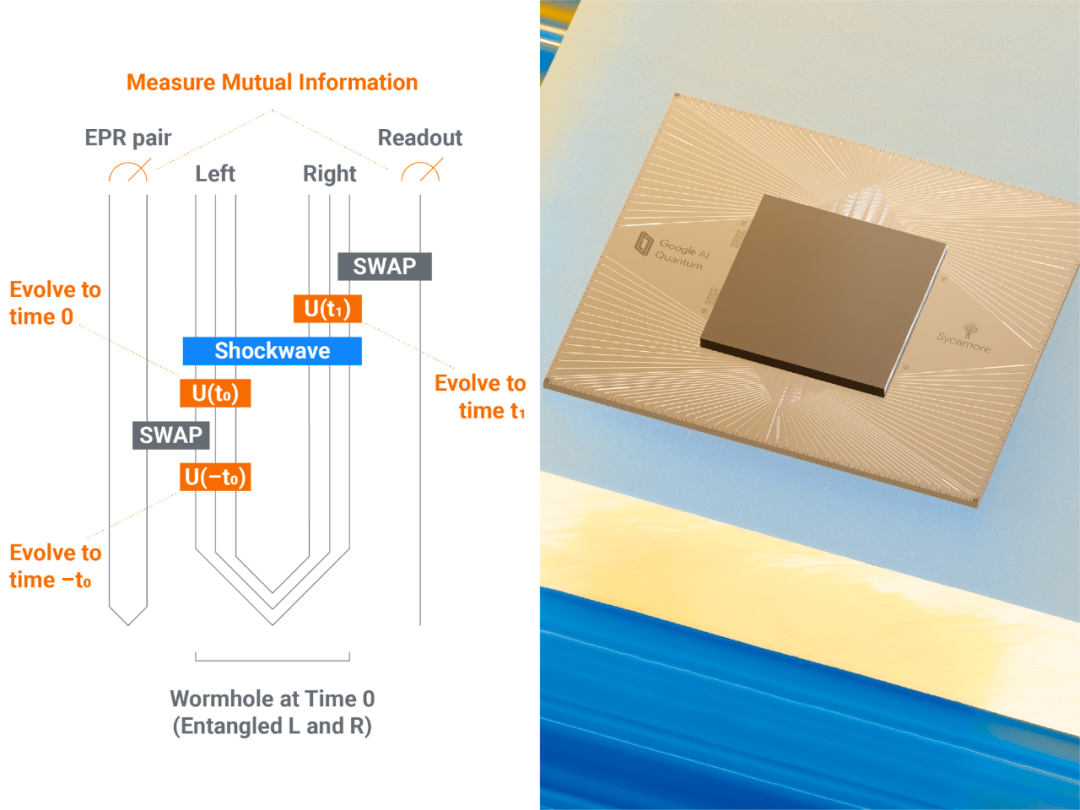
On the Sycamore quantum processor, researchers measured how much quantum information was transferred from one side of the system when negative and positive energy shock waves were applied Pass to the other side. They observed a slight asymmetry between the two energies, showing a key feature of a traversable wormhole. Due to the sensitivity of this protocol to noise, the Sycamore processor's low error rate is critical to measuring the signal; even with 1.5x the noise, the signal will be completely masked.
Outlook
Gravity is just one example of quantum computers’ unique ability to explore complex physical theories: Quantum processors could provide insights into time crystals, quantum chaos and chemistry . This work on wormhole dynamics represents a step toward using quantum processors to discover fundamental physics.
As quantum devices continue to improve, lower error rates and larger chips will allow researchers to probe deeper into gravitational phenomena. Unlike experiments that record gravitational data about the world around them, quantum computers provide a tool for exploring quantum gravity theory. In the future, quantum computers will help develop understanding of future quantum gravity theories beyond current models.
The above is the detailed content of Will 'time travel' come true? Scientists create the first 'wormhole' and appear on the cover of Nature. For more information, please follow other related articles on the PHP Chinese website!

Hot AI Tools

Undresser.AI Undress
AI-powered app for creating realistic nude photos

AI Clothes Remover
Online AI tool for removing clothes from photos.

Undress AI Tool
Undress images for free

Clothoff.io
AI clothes remover

AI Hentai Generator
Generate AI Hentai for free.

Hot Article

Hot Tools

Notepad++7.3.1
Easy-to-use and free code editor

SublimeText3 Chinese version
Chinese version, very easy to use

Zend Studio 13.0.1
Powerful PHP integrated development environment

Dreamweaver CS6
Visual web development tools

SublimeText3 Mac version
God-level code editing software (SublimeText3)

Hot Topics
 1378
1378
 52
52
 How to remove author and last modified information in Microsoft Word
Apr 15, 2023 am 11:43 AM
How to remove author and last modified information in Microsoft Word
Apr 15, 2023 am 11:43 AM
Microsoft Word documents contain some metadata when saved. These details are used for identification on the document, such as when it was created, who the author was, date modified, etc. It also has other information such as number of characters, number of words, number of paragraphs, and more. If you might want to remove the author or last modified information or any other information so that other people don't know the values, then there is a way. In this article, let’s see how to remove a document’s author and last modified information. Remove author and last modified information from Microsoft Word document Step 1 – Go to
 How to get the GPU in Windows 11 and check the graphics card details
Nov 07, 2023 am 11:21 AM
How to get the GPU in Windows 11 and check the graphics card details
Nov 07, 2023 am 11:21 AM
Using System Information Click Start and enter System Information. Just click on the program as shown in the image below. Here you can find most of the system information, and one thing you can find is graphics card information. In the System Information program, expand Components, and then click Show. Let the program gather all the necessary information and once it's ready, you can find the graphics card-specific name and other information on your system. Even if you have multiple graphics cards, you can find most content related to dedicated and integrated graphics cards connected to your computer from here. Using the Device Manager Windows 11 Just like most other versions of Windows, you can also find the graphics card on your computer from the Device Manager. Click Start and then
 New research reveals the potential of quantum Monte Carlo to surpass neural networks in breaking through limitations, and a Nature sub-issue details the latest progress
Apr 24, 2023 pm 09:16 PM
New research reveals the potential of quantum Monte Carlo to surpass neural networks in breaking through limitations, and a Nature sub-issue details the latest progress
Apr 24, 2023 pm 09:16 PM
After four months, another collaborative work between ByteDance Research and Chen Ji's research group at the School of Physics at Peking University has been published in the top international journal Nature Communications: the paper "Towards the ground state of molecules via diffusion Monte Carlo neural networks" combines neural networks with diffusion Monte Carlo methods, greatly improving the application of neural network methods in quantum chemistry. The calculation accuracy, efficiency and system scale on related tasks have become the latest SOTA. Paper link: https://www.nature.com
 How to share contact details with NameDrop: How-to guide for iOS 17
Sep 16, 2023 pm 06:09 PM
How to share contact details with NameDrop: How-to guide for iOS 17
Sep 16, 2023 pm 06:09 PM
In iOS 17, there's a new AirDrop feature that lets you exchange contact information with someone by touching two iPhones. It's called NameDrop, and here's how it works. Instead of entering a new person's number to call or text them, NameDrop allows you to simply place your iPhone near their iPhone to exchange contact details so they have your number. Putting the two devices together will automatically pop up the contact sharing interface. Clicking on the pop-up will display a person's contact information and their contact poster (you can customize and edit your own photos, also a new feature of iOS17). This screen also includes the option to "Receive Only" or share your own contact information in response.
 The single-view NeRF algorithm S^3-NeRF uses multi-illumination information to restore scene geometry and material information.
Apr 13, 2023 am 10:58 AM
The single-view NeRF algorithm S^3-NeRF uses multi-illumination information to restore scene geometry and material information.
Apr 13, 2023 am 10:58 AM
Current image 3D reconstruction work usually uses a multi-view stereo reconstruction method (Multi-view Stereo) that captures the target scene from multiple viewpoints (multi-view) under constant natural lighting conditions. However, these methods usually assume Lambertian surfaces and have difficulty recovering high-frequency details. Another approach to scene reconstruction is to utilize images captured from a fixed viewpoint but with different point lights. Photometric Stereo methods, for example, take this setup and use its shading information to reconstruct the surface details of non-Lambertian objects. However, existing single-view methods usually use normal map or depth map to represent the visible
 Nature publishes major progress in quantum computing: the first ever quantum integrated circuit implementation
Apr 08, 2023 pm 09:01 PM
Nature publishes major progress in quantum computing: the first ever quantum integrated circuit implementation
Apr 08, 2023 pm 09:01 PM
On June 23, Australian quantum computing company SQC (Silicon Quantum Computing) announced the launch of the world’s first quantum integrated circuit. This is a circuit that contains all the basic components found on a classical computer chip, but on a quantum scale. The SQC team used this quantum processor to accurately simulate the quantum state of an organic polyacetylene molecule – ultimately demonstrating the effectiveness of the new quantum system modeling technique. “This is a major breakthrough,” said SQC founder Michelle Simmons. Today's classical computers have difficulty simulating even relatively small molecules due to the large number of possible interactions between atoms. The development of SQC atomic level circuit technology will
 How NameDrop works on iPhone (and how to disable it)
Nov 30, 2023 am 11:53 AM
How NameDrop works on iPhone (and how to disable it)
Nov 30, 2023 am 11:53 AM
In iOS17, there is a new AirDrop feature that allows you to exchange contact information with someone by touching two iPhones at the same time. It's called NameDrop, and here's how it actually works. NameDrop eliminates the need to enter a new person's number to call or text them so they have your number, you can simply hold your iPhone close to their iPhone to exchange contact information. Putting the two devices together will automatically pop up the contact sharing interface. Clicking on the popup will display a person's contact information and their contact poster (a photo of your own that you can customize and edit, also new to iOS 17). This screen also includes "Receive Only" or share your own contact information in response
 What's the reason for the delay in receiving messages on WeChat?
Sep 19, 2023 pm 03:02 PM
What's the reason for the delay in receiving messages on WeChat?
Sep 19, 2023 pm 03:02 PM
The reason for the delay in WeChat receiving information may be network problems, server load, version problems, device problems, message sending problems or other factors. Detailed introduction: 1. Network problems. The delay in receiving information on WeChat may be related to the network connection. If the network connection is unstable or the signal is weak, it may cause delays in information transmission. Please ensure that the mobile phone is connected to a stable network and the network signal strength is good. ; 2. Server load. When the WeChat server load is high, it may cause delays in information transmission, especially during busy periods or when a large number of users use WeChat at the same time, etc.



